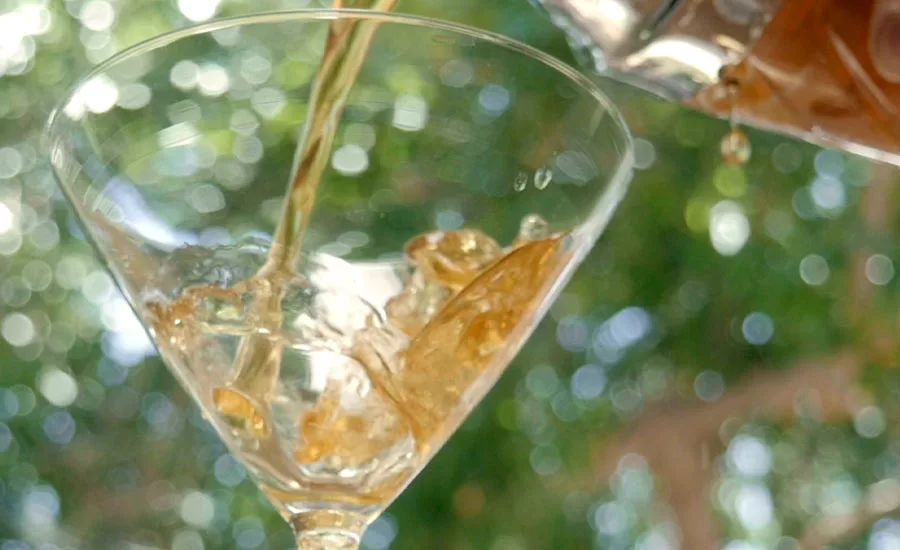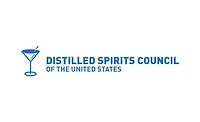Cover Feature
Craft distilled spirits embrace local roots, innovation

In the 1942 musical biopic “Yankee Doodle Dandy,” James Cagney’s Academy Award-winning performance for his portrayal of singer-songwriter George M. Cohan endured audiences with the 1906 patriotic anthem “You’re a Grand Old Flag.” As Cagney proclaims that “ev’ry heart beats true under red, white and blue, where’s there’s never a boast or brag,” he reminds Americans to “keep your eye on the grand old flag.” In the midst of the COVID-19 pandemic, experts continue to keep a watchful eye on how the independent craft spirits industry is doing and tools needed to keep this “slice of Americana” thriving in small and large towns.
Margie A.S. Lehrman, chief executive officer (CEO) of the Louisville, Ky.-based American Craft Spirits Association (ACSA), notes that COVID-19 has tested the resiliency of the craft spirits industry. Yet, due to the tenacity of its 2,000 craft producers pre-pandemic and the local appeal of craft spirits to boost tourism, she believes the passion, resiliency and can-do attitude of craft producers will foster a rebound.
“I think this is one of the most difficult industries to enter as a small business, but what balances out on the other side is that I have never seen a group of people that are more passionate and resilient in terms of what they do,” Lehrman says. “We're still doing a study, but when I asked, a vast majority came in with a decline [in sales] of between 25 through 50 percent between March 1 and May 28,” she says. “Now that will most likely change as distilleries change back from hand sanitizers to what their business proposition is, which is alcohol.”
Lehrman adds that the study forecasts declines of less than 25 percent, showing more optimism toward the end of the year. However, the on-premise factor remains less certain.
“In contrast, I'm disheartened by [the closing of] tasting rooms, and we don't know when we'll be able to open them up again,” she says. “When the pandemic first hit, without government assistance, over 75 and 85 percent had to lay off or furlough employees give or take. We've had everything from reduction of capital expenditures, to decreasing the overall spirit productions, to now decreasing their marketing opportunities, stalling any kind of physical expansion, canceling any new hires, and even decreasing grain and ingredient purchases.”
On-premise, taprooms and tasting rooms have been hit and hit hard, she adds. “We know from our former economic data studies that particularly for the small craft spirits producers that have tasting rooms roughly 44 percent of revenue at that distillery come from the tasting room,” Lehrman says. “Closing them has taken a huge revenue stream away and we’re unsure of when we’ll safely be able to reopen. That is the $60 million dollar question.”
Yet, Lehrman predicts that COVID-19 could ultimately have a positive impact on the craft spirits industry for its ability to foster permanent tax credits and getting craft spirits on equal footing with beer and wine.
‘Alcohol is alcohol’
Through Dec. 31, 2020, the excise tax rate for distilled spirits subject to the reduced rates is $2.70 for each proof gallon (PG) as opposed to $13.50 for each proof gallon up to 100,000 PG removed from bond. “Unlike beer and wine, no reduced tax rate existed for small distillers prior to 2018,” Lehrman says, pointing out that the ACSA passed provisions of the Craft Beverage Modernization and Tax Reform Act in 2017.
“I just want to put this out here, after Prohibition ended we had the 21st amendment, which changed the landscape for what could and couldn’t be done within the alcoholic beverage industry. And along with that came the ability for states to regulate laws and rules visa-vie alcoholic beverages,” she says. “I have said repeatedly that the 21st amendment plus the pandemic equals the 21st century. What does that mean? That means that states are finally beginning to look at this particular industry and realize that in many ways, especially where we can have the necessary guidance put into place, for instance age verification, that modernization has allowed spirits to be brought right to consumers’ home.
“Because I think what is most important at this time is that we are still able to give consumers a choice, but at the same time, and especially with the pandemic, we are able to monitor the public’s health and safety,” Lehrman continues. “For instance, for those states that have allowed direct-to-consumer shipping from the distillery directly to the consumer’s home, where again we have not only a collection of state taxes, but also an age verification. That is the way to modernize and not only meet governmental safety protocol, but allow the consumer to have a choice.”
Lehrman and the ACSA remain vocal about the spirits industry having parody with wine and beer. “We hope that what comes from all of this is the very real realization that the spirits industry isn’t treated any differently from the wine or beer industries,” she explains. “Alcohol is alcohol, and I think that is also one of the items coming out of this particular era we are living in.”
For the past five months, COVID-19 essentially put an end to on-premise sales in bars and restaurants, and even in the reopening phase and then reclosing, beverage companies and craft spirits brands have had to pivot on a dime to drive sales through new avenues: eCommerce, website traffic, direct-to-consumer (DTC), curbside pickup, virtual tastings and happy hours.
Unlike some industries, the alcohol industry has seen explosive trial and growth since the COVID-19 onset, bolstered by online ordering and delivery entering the mainstream. In Boston-based Drizly’s 2020 Consumer Report, which details the impact of COVID-19 on how and where Americans shop for adult beverages, the alcohol eCommerce company reports that 71 percent of current Drizly users and 50 percent of non-Drizly users anticipate that at least 50 percent of their alcohol shopping will take place online versus in store in the next year. The foundation is in place, after new Drizly users spiked by 1,700 percent in spring, it states.
“Cocktail culture is taking serious hold at home: More than half (52 percent) of those surveyed said they have made more cocktails at home during the past three months, and 54 percent predict that they’ll keep mixing things up more at home this summer and beyond,” the report states.
Transition to recoveryNew York-based Nielsen’s report of total off-premise alcohol dollar sales within Nielsen measured channels, including grocery stores and liquor stores, is up 19.2 percent for the one-week period ending June 27 versus a year ago, while the prior week generated a growth rate of 25.4 percent
Nielsen data suggests that spirits continues to lead growth, which is up 29.2 percent, a significant slowdown from previous weeks’ growth trends, while wine grew 18.5 percent in dollar sales. Beer/flavored malt beverages (FMB)/cider was up 16.1 percent and core beer generated an 8.1 percent growth.
When looking at on-premise consumption in bars, restaurants and taprooms for the week ending June 27, Nielsen CGA RestaurantTrak data, which surveyed 15,000 independent restaurant operators, reports that sales velocities improved to minus 10 percent versus the pre-COVID norm (for those outlets still open), representing a 220 percent increase versus the week ending March 28.
Yet, the research firm notes that there are significant state-by-state variations depending on COVID infection rates by state and government action in those states. For instance, over the weekend of July 3-5, Nielsen CGA surveyed consumers in Texas, Florida, California, and New York who drank alcohol in the past three months.
While overall on-premise visitations remained relatively stable with 38 percent of respondents out for an eating occasion, and 14 percent primarily out for a drinking occasion, New Yorkers had a significant increase in visits, the report said. However, 61 percent of respondents in Texas, Florida and California said they chose not to go out at all.
However, takeout and delivery continues to thrive with 65 percent ordering food and 11 percent ordering alcohol. The most popular means of ordering alcohol for takeout/delivery are directly from restaurants/bars (45 percent), from third-party delivery apps (38 percent) and from online liquor, wine and beer retailers (31 percent).
What’s hot in distilled spirits
Prior to the start of the COVID-19 pandemic in mid-March, craft spirits were growing at an amazing 10-year clip, says David M. Ozgo, chief economist at the Washington, D.C.-based Distilled Spirits Council of the U.S. The biggest market driver can be attributed to the resurgence in American whiskeys, specifically the sub-segments of Bourbon, Tennessee and Rye, he adds.
“While total spirits volume and revenues grew at an annualized rate of 2.5 percent and 4.5 percent, respectively, over the last 10 years, American whiskey volumes grew at an annualized rate of 5.8 percent and revenues by 8.1 percent,” Ozgo says. “This is very rapid growth for a category that now accounts for 26.6 million cases.
“Another growth driver has been tequila, while not as large as American whiskey (20.1 million cases in 2019), it has been growing rapidly as well. Over the last 10 years, volumes are up 6.1 percent annualized rate and revenues 7.5 percent,” he continues. “Finally, Irish whiskey has also been on a 10-year tear. Though much smaller (only 4.9 million cases in 2019) than either American whiskey or tequila, Irish whiskey grew volumes at an annualized rate of 15.6 percent and revenues by 18.4 percent.”
Among the reasons Ozgo cites for the growth of craft spirits, particularly super-premium brands, was first and foremost, the overall growth in the spirits marketplace and the fact that large distillers began taking market share from beer and later wine beginning in the early 2000s.
“These gains were fostered by important changes in public policy and marketing strategy,” Ozgo explains. “Allowing Sunday sales of spirits in many states not only created easier market access for many consumers, but also worked to change the perception of spirits. And, spirits companies ended their self-imposed ban on TV advertising, bringing spirits into view for everyday adult consumers.”
The growing spirits market gave way to craft distillers becoming niche operators, offering an array of innovative products. During the past 10 years, an increased interest in “buying local” helped craft distillers fit nicely into this trend, Ozgo says.
ACSA’s Lehrman agrees. “When we talk about going local I think our distillers were able to tell their stories and it was in fact a story that went through local communities in terms of knowing the farmer from which the grain was actually grown to produce the liquid in the bottle.”
In the midst of the pandemic, distilled spirits still are maintaining impressive growth, according to industry analysts. In the nearly $2.4 billion spirits category, whiskey is No. 1 with sales of nearly $780 million and 35.1 percent year-over-year growth in multi-outlets and convenience stores for the 52 weeks ending June 14, states Chicago-based Information Resources Inc. (IRI). Vodka and tequila are No. 2 and No. 3, respectively, with dollar sales of $601 million and $224 million, respectively, and an uptick of 25.5 percent and 66.5 percent, respectively, over the prior year.
Through June 14, the market research firm identifies consistent sales growth from each segment:
- Whiskey — up 35.1 percent
- Vodka — up 25.5 percent
- Tequila — up 66.5 percent
- Rum — up 31.2 percent
- Pre-mixed cocktails —up 107.4 percent
- Cordials — up 55.6 percent
- Non-alcohol mixers — 66.8 percent
- Brandy/cognac —up 38.3 percent
- Gin — up 40.1 percent
Carolyn Lemoine, director of alcohol research at New York-based Beverage Marketing Corporation (BMC), also notes the explosive overall 10-year growth for the spirits industry. “Over the past decade, the categories that have seen the biggest growth in retail dollars are Irish whiskey (8-year compound annual growth rate (CAGR) of 15.7 percent), straight American whiskey (8-year CAGR 8.6 percent), tequila/mezcal (8-year CAGR 7.8 percent), and brandy/cognac (8-year CAGR 5.7 percent).”
Nielsen retail/off-premise data through July 4 suggests there have been a few bumps in the road when comparing consumer purchasing behavior during the transition to recovery phase. There also are definite differences between beer, wine and spirits.
For the 18-week period ending July 4, total spirits were up 33.8 percent, wine was up 27.6 percent, beer/FMB/cider was up 19.9 percent and total alcohol was up 24.5 percent. Additionally, Nielsen reports year-over-year change for total spirits at 29.3 percent by volume and 33.8 percent by value. Wine registered 23 percent volume and 27.6 percent value, while beer/FMB/cider was up 15.9 percent by volume and 19.9 percent by value.
“Spirits consumer dynamics continued to be very strong; 19 percent more households are buying this year off-premise versus the same week year ago, with dollars per trip up 11 percent for an overall strong consumer performance,” Nielsen states.
Staying visible
Albeit from a smaller base, pre-mixed ready-to-drink (RTD) cocktails saw explosive 107.4 percent growth and sales of $168 million in multi-outlets and convenience stores for the 52 weeks ending June 14, IRI data reports.
BMC’s Lemoine also notes the growth trajectory of cocktails. “Prepared cocktails are a bit of a turnaround story, as they had a minus 23.9 percent loss in retail dollars from 2011 through 2015. From 2015 through 2019, however, the category experienced a positive 10 percent change in retail dollars, and is growing quickly. We expect the category to continue growing, with a 27.1 percent increase in dollars through 2022.”
Innovation continues to spur the creation of RTD cocktails. Los Angeles-based DRNXMYTH offers a new line of bartender-created, RTD cocktails that undergo high-pressure processing. The bottles feature two-chambers, allowing the packaging to keep the cold-pressured ingredients and liquor separate until the consumer twists the bottom of the bottle to break the two-chamber seal and create a freshly-made cocktail containing 2.7 ounces of liquor, the company says. DRNXMYTH is available in five flavors: Rum Punch, Ginger Drop, Eastside, Bourbon Sour and Classic Margarita.
Starting in 2019, the industry saw rapid growth of spirits based RTD products, Distilled Spirits of the U.S.’s Ozgo says. “This growth has gone into overdrive during the pandemic. I would expect that post-pandemic, the category will continue to grow rapidly,” he says. “Obviously, cocktails to go is an important phenomenon. It was originally started in a lot of states to allow restaurants to have a new revenue stream. But, we are now seeing a lot of states make it permanent.
“This is a very positive development since on-premise spirits sales had been flat for about 10 years,” Ozgo continues. “Much of this had to do with the fact that a large percentage of restaurant business had become takeout. I believe that over 40 percent of takeout orders were substituted for dining in. Thus, not having cocktails to go was costing the spirits industry sales opportunities.”
BMC’s Manager Partner Brian Sudano notes that craft spirits are growing faster than the overall market. “Different brands in different areas are thriving,” he says. “Whiskey tends to be a differentiator and experiencing the greatest growth within craft. But some companies that specialize in rum and vodka have also experienced strong growth.
“Much of growth was being fueled via tasting rooms and craft spirit venues,” he continues. “Local was a key part of the experience, similar to craft beer.”
While experts cannot predict when the alcohol market will return to “normal,” they note the seismic shift in channels and changing consumer behavior is likely to stay.
“The way consumers engage with spirits will likely evolve from pre-pandemic norms,” Sudano says. “We do not agree that it will take until 2024 to return to pre-COVID levels. As seen with recent re-openings, consumer behavior tends to return move back to normal levels as things reopened. We feel that this will be the case post COVID.
“What is unpredictable is when COVID will be in the review mirror,” he continues. “On a global basis, the attributes that drove spirit growth, mixing flexibility, prestige, providence, etc., have not changed and will return in future, although uncertain if same levels as pre-COVID.”
Looking for a reprint of this article?
From high-res PDFs to custom plaques, order your copy today!






